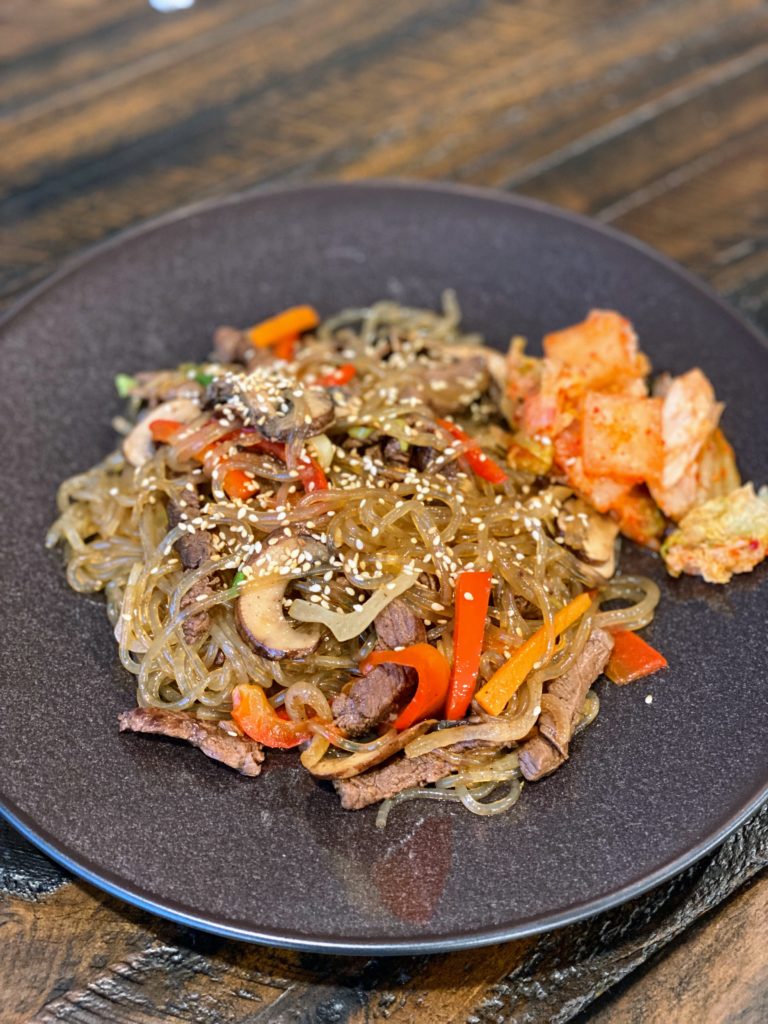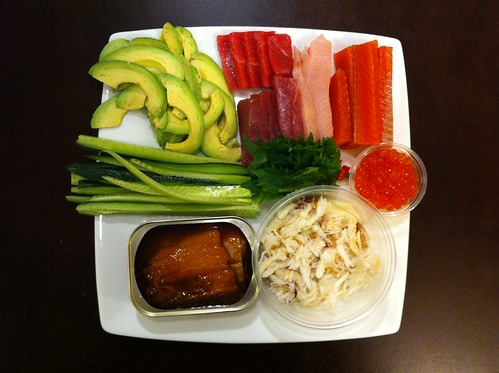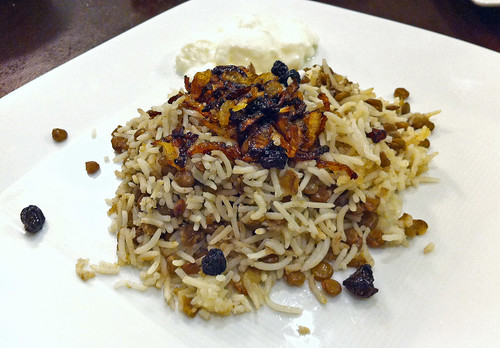I can’t shake the memory of the savory-sweet inari sushi I had on the train in Japan this past May.
Nishan and I were tired and hungry after a long day in Hakone, a sleepy town at the feet of Mount Fuji and best known for their onsen, or hot springs. We only had ten minutes left to catch the train back to Tokyo so I dashed into a shop and grabbed a small box of inari sushi. It was a welcome treat after a long day in the mountains and we inhaled it down to the last grain of rice on the return train. Each piece of sushi held a different savory and oh-so-slightly sweet filling atop the rice: furikake, tsukemono, shiitake mushrooms, and tamago.
I’ve since learned how to make these delicious parcels and they are much easier to produce than I initially thought. They are simple but filling and perfect for a picnic — or your next train ride.
Ingredients:
1 1/2 cups sushi rice
1 2/3 cups water
1 4-inch piece of kombu seaweed
1/4 cup rice vinegar
2 tablespoons sugar
1/2 teaspoon salt
8 slices abura-age deep-fried tofu
3 tablespoons sesame seeds
1/2 carrot
4 dried shiitake mushrooms
4 tablespoons sugar
2 teaspoons mirin
2 3/4 cups dashi stock
4 tablespoons soy sauce
2 tablespoons sake
1. Make the vinegared rice: soak the kombu seaweed in the water for about one hour to make the stock. Wash the rice 30 minutes prior to cooking and drain on a sieve. Put the vinegar, sugar, and salt in a small pot and heat slightly until dissolved. This completes the vinegar dressing. Place the rice and stock into a rice cooker and cook according to cooker instructions. Transfer the rice to a large bowl and sprinkle with the vinegar dressing. Using a flat wooden spoon, toss the rice with horizontal cutting strokes while cooling the rice with a hand-fan. When tossing is completed, cover the rice with a clean cloth moistened with water.
2. Mix 3/4 cup dashi stock, 1 tablespoon sugar, and 1 teaspoon mirin in a saucepan. Peel the carrot and cut into julienned strips. Add carrot to saucepan and simmer over a low heat until seasoned, about 5 minutes. Set aside.
3. Mix 3/4 cup dashi stock, 1 tablespoon sugar, 1 teaspoon mirin, and 1 tablespoon soy sauce in another saucepan. Soften the dried shiitake mushrooms in warm water and cut into 1/4 inch cubes. Add mushrooms to saucepan and simmer over a low heat until seasoned, about 10 minutes. Set aside.
4. Mix remaining 1 1/2 cups dashi stock, 3 tablespoons sugar, and sake in another saucepan. Place the abura-age tofu in the saucepan and bring to a boil. Lower to a simmer and cook for about 5 minutes. Add the remaining 3 tablespoons soy sauce to the abura-age simmering liquid, slightly with a lid and simmer until the liquid is mostly gone.
5. Add the sesame, carrot, and shiitake mushrooms to the vinagared rice and mix.
6. Squeed the abura-age lightly to remove moisture. Fill each abura-age pocket with vinagared rice. Adjust the shape and fold the opening. Serve room temperature.






